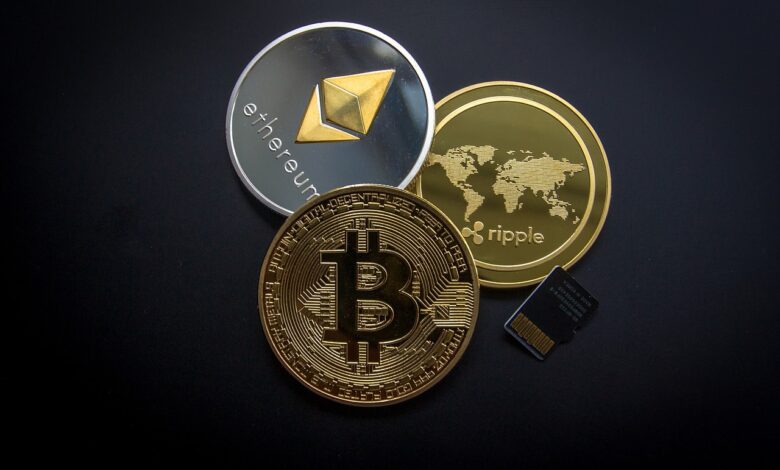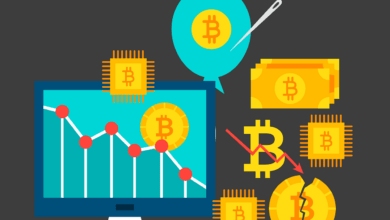Fortify Your Crypto – Embrace Two-Factor Authentication

In an era where digital currency has transcended the realms of traditional finance, the necessity for robust security measures cannot be overstated. As cryptocurrency continues to gain traction among investors and users alike, the importance of safeguarding one’s assets against potential threats has become paramount. The implementation of two-factor authentication (2FA) serves as a crucial line of defense in this ever-evolving landscape, offering an additional layer of verification that enhances the overall safety of one’s digital holdings.
The concept of dual authentication is not merely a recommendation but a fundamental requirement for anyone engaging in the cryptocurrency market. This multi-factor approach emphasizes the value of combining something you know–such as a password–with something you possess, like a mobile device or an authentication app. Such a protocol minimizes the risks associated with unauthorized access, ensuring that even if your primary credentials are compromised, your cryptocurrency remains protected.
Furthermore, the integration of two-step verification into everyday practices is critical for fostering a culture of security within the digital currency community. By prioritizing safety through multi-factor authentication, users can significantly reduce their susceptibility to hacking attempts and phishing schemes. It is essential to recognize that in the world of crypto, where transactions are irreversible and anonymity often reigns, safeguarding one’s assets should take precedence over convenience.
Ultimately, the significance of adopting comprehensive security solutions like two-factor authentication cannot be dismissed. As we navigate the complexities of digital currencies, understanding and implementing these protective measures will not only enhance individual asset security but also contribute to the overall integrity and trustworthiness of the cryptocurrency ecosystem. In this light, embracing dual authentication emerges not just as a precautionary step, but as an indispensable aspect of modern financial literacy.
The Importance of Two-Factor Authentication in Crypto Security
In the realm of cryptocurrency, where digital assets are vulnerable to a myriad of threats, the significance of robust security measures cannot be overstated. One such crucial measure is two-factor authentication (2FA), a form of multi-factor authentication that adds an additional layer of protection beyond traditional username and password combinations. The necessity for this dual authentication mechanism arises from the increasing sophistication of cyberattacks targeting cryptocurrency exchanges and wallets. By implementing 2FA, users enhance their defense against unauthorized access, thereby safeguarding their valuable digital assets.
Two-step verification serves as a pivotal component in the security framework of cryptocurrency transactions. Its importance lies in the fact that it requires not just something the user knows (like a password) but also something they possess (such as a mobile device or hardware token). This dual requirement significantly reduces the risk of account compromise. For instance, even if an attacker manages to obtain a user’s password through phishing or data breaches, they would still need access to the second factor–often a time-sensitive code sent to the user’s mobile device–thereby thwarting potential theft.
The value of multi-factor authentication extends beyond individual security; it bolsters the integrity of the entire cryptocurrency ecosystem. As more users adopt cryptocurrencies, exchanges and wallets face increasing scrutiny regarding their security protocols. By prioritizing two-step verification, these platforms not only protect their clients but also enhance their reputation within the market. A secure environment fosters user trust, encouraging wider adoption and ultimately contributing to the overall stability and growth of the digital currency landscape.
Moreover, the evolution of cyber threats necessitates a proactive approach to security in the crypto space. Hackers are continuously developing new techniques to exploit vulnerabilities, making it imperative for users and platforms alike to stay ahead of these threats. Two-factor authentication serves as a critical line of defense, ensuring that even if an account is breached, immediate access to funds remains restricted. This defensive layer acts as both a deterrent against attacks and a safeguard for users’ investments.
The significance of dual authentication becomes even more apparent when considering recent high-profile breaches within the cryptocurrency sector. Many incidents have exposed glaring weaknesses in security practices where 2FA was either poorly implemented or entirely absent. These breaches highlight not only the financial loss incurred by individuals but also the psychological toll on investors who may feel disillusioned by insecure systems. Implementing robust two-step verification can mitigate such risks and provide peace of mind for those participating in this volatile market.
In conclusion, the importance of two-factor authentication in cryptocurrency protection cannot be underestimated. As digital currencies continue to transform our financial landscape, ensuring safety through effective security measures becomes paramount. Multi-factor authentication is not just an optional enhancement; it is a necessity for anyone looking to engage with cryptocurrencies securely. By recognizing its value and integrating it into everyday practices, we can collectively foster a more secure environment conducive to innovation and growth in this exciting field.
The Importance of Two-Factor Authentication in Crypto Security
In the rapidly evolving landscape of cryptocurrency, the need for robust security measures cannot be overstated. At the forefront of these protective strategies is two-factor authentication (2FA), a method that adds an essential layer of security to digital assets. Essentially, 2FA requires users to provide two distinct forms of identification before gaining access to their accounts. This dual authentication process serves as a formidable barrier against unauthorized access, significantly enhancing the protection of sensitive information.
The necessity of dual authentication in the realm of cryptocurrency cannot be ignored. As more individuals and institutions engage with digital currencies, they become prime targets for cybercriminals. Data breaches and hacking incidents have plagued numerous exchanges and wallets, leading to substantial financial losses. By implementing two-step verification, users can dramatically reduce the likelihood of falling victim to these nefarious activities. The simple act of requiring a second form of identification–often a text message or an authentication app–can thwart many attempts at unauthorized access.
Moreover, the value of multi-factor authentication extends beyond just securing individual accounts; it reinforces the overall integrity of the cryptocurrency ecosystem. When users adopt stronger security practices, they contribute to a collective effort that enhances trust and reliability within the market. This is particularly important given the decentralized nature of cryptocurrencies, which often operate in environments where oversight is minimal. By prioritizing safety through two-factor authentication, users not only protect their own assets but also foster a more secure landscape for all participants.
In addition to its role in protecting digital currency, two-step verification offers significant advantages in terms of user peace of mind. Knowing that there is an additional layer of security can alleviate concerns about potential theft or fraud. This psychological aspect plays a crucial role in encouraging broader adoption of cryptocurrencies among individuals who may initially be hesitant due to fears about security vulnerabilities. As more people gain confidence in the protection offered by dual authentication methods, the likelihood of increased participation in the crypto market grows.
The significance of implementing two-factor authentication should be viewed as a fundamental component of any crypto strategy. It is not merely an optional feature; rather, it should be regarded as a necessary safeguard for anyone dealing with digital currencies. Neglecting this vital step could lead to devastating consequences, including loss of funds and personal data breaches. Thus, embracing 2FA is not just wise; it is imperative for anyone serious about securing their investments.
Ultimately, as we navigate the future of finance intertwined with technology, understanding and utilizing effective security measures like two-factor authentication will remain paramount. The interplay between convenience and security is delicate in the crypto space; however, by emphasizing the importance of dual authentication protocols, users can achieve a balance that prioritizes safety without sacrificing accessibility. In this ever-changing digital landscape, those who take proactive steps towards securing their assets will undoubtedly emerge as frontrunners in the world of cryptocurrency.
The Importance of Two-Factor Authentication in Crypto Security
In the rapidly evolving landscape of cryptocurrency, the necessity of robust security measures cannot be overstated. Two-factor authentication (2FA) stands out as a fundamental layer of protection that significantly enhances the security of digital assets. By requiring users to provide two forms of verification before accessing their accounts, 2FA effectively mitigates the risks associated with unauthorized access. This dual authentication process not only serves as a formidable barrier against cyber threats but also instills a sense of confidence among users regarding the safety of their investments.
The significance of two-step verification in cryptocurrency protection is underscored by the alarming statistics surrounding crypto-related hacks and breaches. According to various studies, a substantial percentage of successful cyberattacks can be attributed to compromised passwords, which are often the sole line of defense for many users. By implementing 2FA, individuals can safeguard their digital currencies against such vulnerabilities. This added layer of security requires a unique code–often sent via SMS or generated by an authentication app–thus ensuring that even if a password is compromised, unauthorized access remains highly improbable.
Moreover, the value of multi-factor authentication (MFA) in digital currency security extends beyond mere password protection. It embodies a holistic approach to safeguarding sensitive information by integrating various forms of verification methods, such as biometrics or hardware tokens. Such diversification in authentication methods creates a fortified environment for crypto transactions and holdings. This is particularly crucial in an industry characterized by its decentralized nature and the irreversible nature of transactions, where recovering lost funds is often nearly impossible.
Ultimately, the adoption of dual authentication mechanisms represents not just a precautionary measure but a necessary evolution in the realm of cryptocurrency safety. As the digital currency market continues to grow, so too does the sophistication of cybercriminals targeting it. By prioritizing two-factor authentication as an integral component of their security strategy, users can enhance their overall protection against potential threats and foster a more secure ecosystem for cryptocurrency trading and investment. In this context, 2FA is not merely advisable; it is imperative for anyone navigating the complexities of digital currency ownership and exchange.
The Importance of Two-Factor Authentication in Crypto Security
In the ever-evolving landscape of cryptocurrency, where digital assets are frequently targeted by malicious actors, the significance of two-factor authentication (2FA) cannot be overstated. As we navigate this complex domain, it becomes increasingly clear that the implementation of dual authentication mechanisms is not merely a precaution but a necessity for anyone invested in digital currencies. By requiring users to provide two forms of verification before accessing their accounts, 2FA adds a robust layer of security that is essential for the protection of valuable assets.
To implement two-step verification effectively in the realm of crypto, one must first understand the underlying principles of multi-factor authentication. This process typically involves something you know (a password) and something you have (a smartphone app or hardware token). Many cryptocurrency exchanges and wallets now offer various methods for 2FA, including SMS codes, authenticator apps like Google Authenticator or Authy, and even biometric verification. Users should carefully evaluate these options to choose the one that best aligns with their security needs and usability preferences.
The value of dual authentication extends beyond mere convenience; it serves as a critical safeguard against unauthorized access. Cybercriminals are constantly devising new tactics to compromise accounts, whether through phishing schemes or brute-force attacks. By requiring an additional verification step, individuals can significantly mitigate the risk of account takeover. In fact, studies have shown that accounts secured with two-step verification are up to 99% less likely to be hacked than those relying solely on passwords.
Moreover, the necessity of this form of digital security becomes particularly evident when considering the financial implications of cryptocurrency investments. A single breach can result in devastating losses, not only financially but also in terms of trust and reputation within the crypto community. As we have witnessed through high-profile hacks and breaches, even well-established exchanges are vulnerable. Consequently, users must adopt proactive measures like 2FA to bolster their defenses against potential threats.
The significance of two-step verification goes hand-in-hand with a broader understanding of security in the cryptocurrency ecosystem. While 2FA is an essential component, it should be part of a multi-layered approach to safety that includes regular software updates, strong password policies, and awareness of phishing tactics. Combining these strategies enhances overall protection and fortifies individual user security against a backdrop of increasing cyber threats.
In conclusion, as we continue to embrace the digital currency revolution, the integration of dual authentication systems into our security protocols will serve as a bulwark against the challenges posed by cybercrime. The importance of two-factor authentication in crypto cannot be understated; it is an indispensable tool for safeguarding our assets and ensuring the longevity of our investments in this dynamic market. By prioritizing multi-factor authentication and remaining vigilant about security practices, users can better protect themselves in an increasingly perilous digital landscape.





